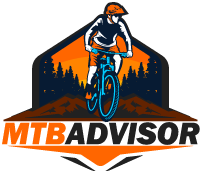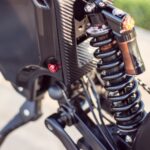Understanding Your Bike
Before diving into the customization process, it’s important to know the basics of your mountain bike (MTB). Understanding how each component works individually gives you better insight into how they interact together. This way, you can make the best modifications suited for your style of riding.
Frame Size and Geometry
The first thing to consider is your bike’s frame size and geometry. A perfect fit can make all the difference, enhancing both comfort and performance. A bike that is too small or too large can cause discomfort and make you less efficient. When looking for a new frame or adjustments, think about:
- Top Tube Length: A longer tube means more stretched-out posture, which is great for downhill speed.
- Seat Tube Angle: A steeper angle allows for a more aggressive riding position.
- Chainstay Length: Shorter stays offer more agility, while longer stays might improve stability.
Wheel Size
Wheel size plays a pivotal role in performance. Most mountain bikes come with 26-inch, 27.5-inch, or 29-inch wheels. Each has its own strengths:
- 26-inch: Quick and nimble for tight trails and technical riding.
- 27.5-inch: A great compromise, balancing speed and agility.
- 29-inch: Excellent for rolling over obstacles and maintaining speed on straight paths.
Suspension Settings
Suspension is another area ripe for customization. It’s not just about comfort; it can greatly enhance your control and performance on varied terrain. Getting these settings right may take a little trial and error, but the payoff can be substantial.
Types of Suspension
You generally have three types of suspension configurations:
- Hardtail: Features front suspension only, offering efficiency on smooth trails.
- Full Suspension: Comes with both front and rear suspension, smoothing out rough terrains and allowing for better traction.
- Rigid: No suspension at all, which is typically lighter and more efficient on smooth surfaces but less forgiving on bumps.
Setting Up Your Suspension
Fine-tuning your suspension settings can drastically impact your ride. Here are some tips:
- Rebound: This setting controls how quickly the suspension returns after compressing. Too slow, and you could be thrown off balance; too fast, and it may feel bouncy.
- Compression: This adjusts how much the suspension compresses under weight. A firmer setting can help in pedaling efficiency, while a softer setup may give you more comfort on steep descents.
- Sag: Aim for about 25-30% of the total travel for optimal performance, balancing comfort and responsiveness.
Tires and Tire Pressure
Tires are your direct contact with the ground, so customizing them is crucial. The right tire can significantly enhance traction, rolling resistance, and overall control.
Choosing the Right Tires
Evaluate your typical riding conditions and choose wisely. Here are some popular options:
- Knobby Tires: Ideal for rugged terrains and provide great grip.
- Slick Tires: Perfect for smooth surfaces and helps with speed.
- All-Mountain Tires: A versatile choice that performs decently across various terrains.
Tire Pressure
The correct tire pressure is essential for performance. Too high, and you lose grip; too low, and you risk pinch flats. As a general rule:
- For hardpack trails: 28-35 psi.
- For loose surfaces: 22-28 psi.
Don’t forget to adjust based on rider weight and personal comfort level.
Drivetrain Customizations
Your MTB’s gears and drivetrain are key to how smoothly you can shift and how efficiently you can climb those tough hills. Customizing this can feel like giving your bike a performance boost.
Choosing the Right Gearing
Modern mountain bikes often come with various gearing options. The trend has been leaning towards a single chainring system for simplicity, but let’s break down the choices:
- Single Chainring: Great for weight savings and simplicity but may lack some versatility in steep climbs.
- Double or Triple Chainring: More gears mean more choices, but can be heavier and more complex to manage.
Upgrading Components
If you are feeling ambitious, consider upgrading components like the crankset, derailleur, or shifters. Look for options that offer weight savings and improved shifting performance.
Brakes: Stopping Power Matters
Safety first, right? Brakes play a crucial role in your MTB’s performance, and there’s quite a bit you can do to make them more effective.
Types of Brakes
Most modern mountain bikes are equipped with one of two types of brakes:
- Mechanical Disc Brakes: Provide excellent stopping power and performance in wet conditions.
- Hydraulic Disc Brakes: Known for their responsiveness and modulation, allowing for smoother control.
Adjusting and Upgrading Brakes
Whether you decide to stick with your current brakes or upgrade them, regular maintenance is key. Always check:
- The brake pads for wear and tear.
- The rotor for damage or warping.
- The brake lines for leaks or corrosion.
Remember, braking performance can literally make or break your ride, pun intended.
Finishing Touches: Personalizing Your Ride
Once you’ve tackled the major components, consider some finishing touches that make your bike truly yours.
Handlebar Width and Rise
Adjusting your handlebars can significantly affect your comfort and control. Wider bars often provide more leverage, while a higher rise can improve your riding posture.
Saddle Comfort
Let’s talk about the ‘saddle sore’ topic. Finding a saddle that suits your anatomy might take some research. You’ll want a saddle that:
- Offers Support: Look for contours that fit your sit bones.
- Fits Your Riding Style: Different saddles cater to various riding positions.
Accessories for Added Functionality
Some additional accessories can also enhance your riding experience. Consider:
- Bike Computer: For tracking speed, distance, and even navigating.
- Lights: If you plan on riding in low-light conditions.
- Phone Mount: Keeping your phone within reach for navigation or emergencies.
Regular Maintenance and Upkeep
Your tailored modifications won’t mean much if you neglect regular maintenance. Establish a routine for cleaning, lubricating, and checking components. Keeping your bike in top shape ensures that all your customizations translate into performance on the trail.
Creating a Maintenance Schedule
A simple schedule can keep your bike fresh. Consider:
- Wipe down the frame and components after each ride.
- Inspect tires regularly for wear, punctures, or low pressure.
- Lubricate the chain and inspect the gears every few rides.
Conclusion
Customizing your mountain bike for maximum performance is an ongoing journey that can be incredibly rewarding. Every tweak and adjustment brings you closer to the riding experience you desire. Whether you are slicing through tight corners, climbing steep trails, or descending with devilish speed, a tailored bike makes all the difference. So roll up your sleeves, grab those tools, and make your MTB the best it can be. Happy trails!






